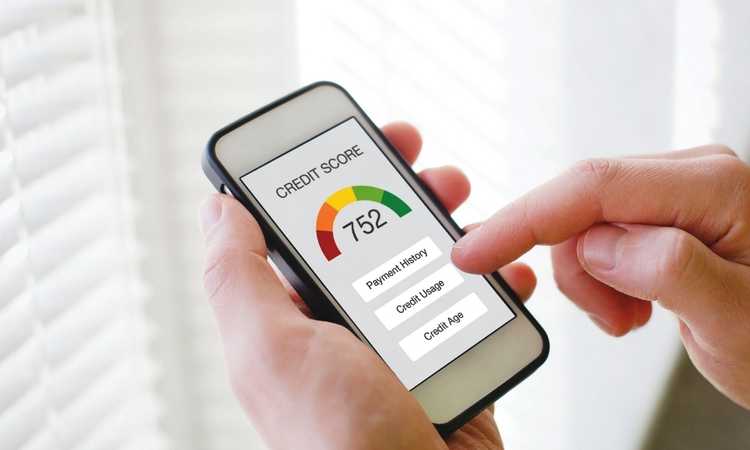FICO Scores are the most common type of credit score, but what is VantageScore? How is it different from FICO Scores? And which one should you be concerned about when you’re trying to raise your credit score? This blog post will answer all those questions and more. Stay tuned!

1. What is a VantageScore and how is it different from a FICO score
There are two main types of credit scores: the FICO score and the VantageScore. Both are used by lenders to assess your creditworthiness, but there are some key differences between the two.
The FICO score is the most widely used credit score, and it ranges from 300 to 850. Your FICO score is based on your payment history, credit utilization, length of credit history, mix of credit accounts, and new credit activity.
The VantageScore was introduced in 2006 as an alternative to the FICO score. It ranges from 501 to 990 and is also based on your payment history, credit utilization, length of credit history, mix of credit accounts, and new credit activity.
However, the VantageScore model is updated more frequently than the FICO model, so it may be a more accurate reflection of your current credit situation. Additionally, the VantageScore model gives greater weight to recent payment history and less weight to length of credit history than the FICO model.
So, which score should you focus on? If you’re trying to get a sense of your overall credit health, it’s a good idea to check both your FICO score and your VantageScore. That way you can get a complete picture of where you stand.
Read: Credit Score vs. Credit Report: What’s The Difference?
2. How can you get your VantageScore
There are a few different ways to get your Vantage Score. One way is to contact any of the three major credit reporting agencies – Equifax, Experian, or TransUnion. You can also contact VantageScore Solutions directly. Another way to get your Vantage Score is to sign up for a credit monitoring service that includes a Vantage Score in its credit report.
Finally, some lenders and creditors may provide access to your Vantage Score as part of their account management tools. If you’re not sure whether your lender offers this, you can check their website or contact customer service.
Regardless of how you get your Vantage Score, it’s important to remember that it’s just one factor in determining your overall creditworthiness. Lenders may also consider factors like your credit history, income, and debts when making decisions about loan approvals and interest rates.

3. What factors go into calculating your VantageScore
Your VantageScore is a number between 300 and 850 that lenders use to evaluate your creditworthiness. The score is based on information in your credit report, including your payment history, credit utilization, credit mix, and length of credit history.
Payment history is the most important factor in your VantageScore, followed by credit utilization. That means that paying your bills on time and keeping your balances low will help you to achieve a high score. Additionally, having a mix of different types of credit (such as revolving and installment) can also boost your score.
Finally, a long credit history demonstrates responsible borrowing habits and can improve your score. By understanding these factors, you can take steps to improve your VantageScore and secure better terms on loans and credit products.
4. How can you improve your Vantage Score
Your VantageScore is a scoring system used by lenders to help assess your creditworthiness. It’s similar to a FICO score, but there are some important differences. Here are four ways you can improve your VantageScore:
1. Pay your bills on time:
Payment history is the most important factor in your VantageScore. So, one of the best things you can do to improve your score is to make all of your payments on time, every time.
2. Keep your balances low:
Another important factor in your VantageScore is credit utilization, which is the amount of available credit you’re using. To keep your score high, it’s best to keep your balances low, ideally below 30% of your total credit limit.
3. Use a mix of credit types:
Having a mix of different types of credit can also help improve your score. So, if you have the opportunity to open a new type of account (like a store card or an installment loan), it might be worth considering it.
4. Check for errors:
Sometimes mistakes happen, and errors can find their way onto your credit report. If you spot an error, dispute it with the relevant bureau and they’ll investigate and correct it if necessary. This can help give your score a boost.
Following these tips can help you improve your VantageScore and make it easier to get approved for loans and lines of credit in the future.

5. What are the benefits of having a high Vantage Score
A high Vantage Score is beneficial for many reasons. For one, it indicates that you manage your credit well and are therefore a low-risk borrower. This can make it easier to qualify for loans and get lower interest rates.
Additionally, a high score demonstrates to landlords and employers that you’re financially responsible, which can make it easier to rent an apartment or get a job.
Finally, a high score can give you more negotiating power when it comes to insurance rates and cell phone contracts. In short, there are many benefits to having a high Vantage Score.
Now that you know what a Vantage Score is and how it’s calculated, you can be better prepared when applying for a loan or credit card. Keep in mind that your score may change over time, so it’s important to stay informed about the factors affecting your credit rating.

Erika Finn, founder of Credit Help, is an attorney who graduated from law school (JD) at University of California, Berkeley and is a member of the California Bar Association. She was a member and editor of the California Law Review and won the Prosser Prize for Legal Accounting. She holds a Master’s Degree (MFA) from the University of Southern California (USC) and a Bachelor’s degree (BA) from Indiana University- Bloomington with highest distinction.
Credit Help believes that everyone should have access to helpful, free information about how to raise their credit rating.
Articles on Credit Help are not legal advice or financial advice.